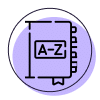
In natural language processing, a tokeniser is a tool used to break up text into discrete units called tokens. A token can be a word, punctuation, number, symbol or other meaningful unit in the text. The purpose of the tokeniser is to prepare the text for machine learning analysis and modelling.
There are different types of tokenisers, including rule-based and machine learning-based tokenisers. Rule-based tokenisers use predefined patterns to divide text into tokens, while machine learning-based tokenisers use language models to identify patterns and structures in the text and divide it into tokens.
Tokenisers are an important tool in natural language processing, as proper representation of input data is essential for training accurate machine learning models.
Hoy, 3 de octubre, hemos estado en los prestigiosos "Premios SCALEUPS B2B organizada por la Fundación Empresa y Sociedad, para hablaros de la Medici� [...]
Read More »Industry 4.0 or the Fourth Industrial Revolution is based on the integration of digital technologies in the production and processing of goods and services.
Read More »Nowadays digital transformation is key in any type of business. The 40% of Spanish companies will not exist in its current form in the next few [...]
Read More »If you don't know the difference between an ERP (Enterprise Resource Planning) system and a CRM (Customer Relationship Management) system, here's what you need to know about the [...]
Read More »